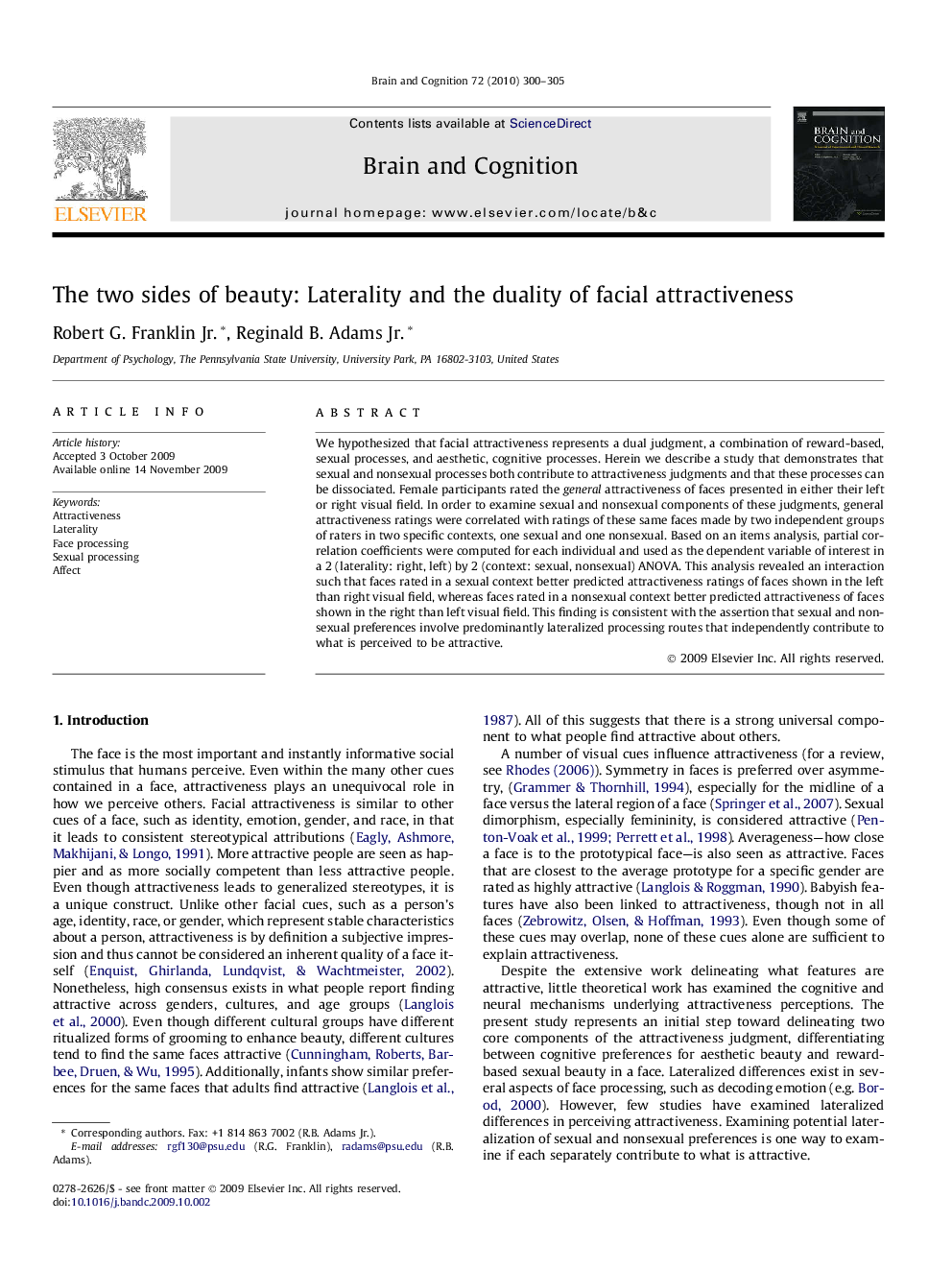| Article ID | Journal | Published Year | Pages | File Type |
|---|---|---|---|---|
| 924789 | Brain and Cognition | 2010 | 6 Pages |
We hypothesized that facial attractiveness represents a dual judgment, a combination of reward-based, sexual processes, and aesthetic, cognitive processes. Herein we describe a study that demonstrates that sexual and nonsexual processes both contribute to attractiveness judgments and that these processes can be dissociated. Female participants rated the general attractiveness of faces presented in either their left or right visual field. In order to examine sexual and nonsexual components of these judgments, general attractiveness ratings were correlated with ratings of these same faces made by two independent groups of raters in two specific contexts, one sexual and one nonsexual. Based on an items analysis, partial correlation coefficients were computed for each individual and used as the dependent variable of interest in a 2 (laterality: right, left) by 2 (context: sexual, nonsexual) ANOVA. This analysis revealed an interaction such that faces rated in a sexual context better predicted attractiveness ratings of faces shown in the left than right visual field, whereas faces rated in a nonsexual context better predicted attractiveness of faces shown in the right than left visual field. This finding is consistent with the assertion that sexual and nonsexual preferences involve predominantly lateralized processing routes that independently contribute to what is perceived to be attractive.
